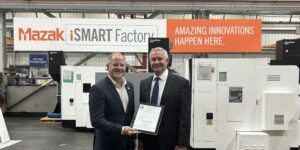2014 Welding Outlook
As automation and technology advance to make shops more competitive, they also make a higher skilled workforce more critical than ever before. With opportunities rising in the energy, power generation and infrastructure markets, Mark Elender of ESAB examines why the ongoing challenge is to find adequately trained workers that can get the job done.
Posted: January 10, 2014
As we enter 2014, we anticipate a slight rate of improvement over 2013 business conditions. The energy market remains a growing sector as natural gas development in North America continues at a high rate. As a result, upstream, midstream and downstream businesses are benefiting as an increase in hydrocarbon expansion both in oil and natural gas production is driving changes in technologies that were previously not considered, including liquefied natural gas (LNG) exportation and use of LNG to fuel commercial transport.
Exportation of products such as gas turbines for power generation is another energy-related area forecasted for growth. We also expect to see increased business recovery in the U.S. wind energy sector that’s retracted over the past two years.
In addition, the infrastructure sector offers growth opportunity. To provide the infrastructure the U.S. needs to remain competitive, we need to make investments in infrastructure such as bridges and water facilities, which translates to opportunities for manufacturers.
In terms of products and product applications, we anticipate a continued demand across all markets for robotics and automated products and processes that help reduce customers’ use of more labor-intensive manual operations and improve productivity. Automation and technology advances have made the U.S. more competitive on a global scale.
Consequently, we see more manufacturing facilities bringing products and production back to the U.S. Advancements in technology are making a higher skilled workforce more critical than ever before.
From a welding industry point of view and for all the trades, there is the ongoing challenge of finding adequately trained workers to get the job done. The necessity to train and groom young people for manufacturing occupations remains a significant issue for our customers as the need for higher skilled employees grows.
OEMs must provide solutions to users in the form of products that specifically address this requirement such as our newly introduced pre-engineered robotic welding cell designed for education and training.
We believe OEMs should work directly with many trade schools throughout the U.S. to bring new products and technologies to the classroom for hands-on learning and in the form of Web-based learning tools and resources.
It’s best for OEMs to train onsite at the customer’s facility so that they can provide complete training for welders and machine operators on new products, processes and techniques to reduce manufacturing costs and increase productivity. Onsite training is convenient for the customer, allows training of a maximum number of workers, and is skill-building training that is tailored to the customer’s specific needs. As advancements in automation continue to take hold, education and training for our youth and for our customers will be key.
One of the most significant issues facing industry will be the need to find adequately trained labor. Also critical is that customers examine and consider new technologies, technology advancements and automation to reduce their cost and improve their production capability.
In general, OEMs should continue to improve their customers’ productivity and quality and reduce their cost by providing the most advanced, highly capable welding and cutting products and processes, as well as the proper training to ensure the highest return on investment.
















